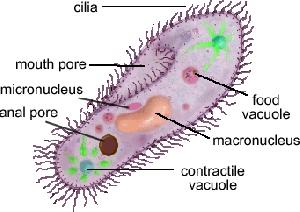You’ve seen a paramecium before. It was that little football-shaped (actually a prolate spheroid) critter that you viewed under the microscope in high school biology class. These tiny creatures are covered with microscopic hair-like oars known as cilia, which they use to move around in water.

Similar cilia line your nose and airways. They help you remove inhaled dust and dirt from your lungs and nose. Apparently they continue moving, at a progressively slower rate, for up to 20 hours after death. Biagio Solaria and his colleagues at the University of Bari in Italy have studied this phenomenon and found that the this decline in mobility is predictable and observing the beating rate of cadaver cilia might provide an accurate time of death in the first 24 hours after death. They will report their results in the upcoming International Symposium on Advances in Legal Medicine in Frankfurt, Germany.
Since all methods for determining the time of death are fraught with inaccuracies, a new method is always welcome. Hopefully, this one will pan out.
